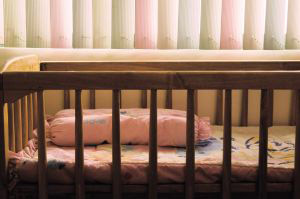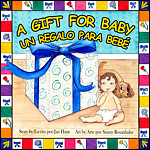This week on The Attached Family online, Attachment Parenting International members can read the debut of the “Professional Parenting” series, a column written by Judy Arnall, Canadian mother of five and author of the widely acclaimed Discipline without Distress – you should see my well-worn copy of the book that gives parents real tried-and-true discipline techniques without resorting to spanking, yelling, or the infamous timeout.
This first column of Judy’s, “Gift-Giving from the Heart and Hands, Not the Wallet,” is so timely as the biggest shopping day of the year arrives the Friday following the American Thanksgiving Day…and another season of holiday gift-giving will soon commence as soon as we’ve all finished our turkey and pumpkin pie. Thing is, well, this recession we’re in…I can tell the economy is better than it was a year ago when announcements of job layoffs and company bankruptcies clogged the television news hours, but you know, it’s not to the point where many of us are willing to spend freely on non-essential living expenses. My family included, certainly.
In her column, Judy gives a long, long list of wonderful ideas for gifts that toddlers, preschoolers, older children, teens, and even parents can make themselves – with more heart than opening up the wallet. Let me tell you of some of my favorites:
- For toddlers…plant seeds indoors in clay pots, decorate the clay pots, and the flowers will bloom by spring. What a great idea!
- For preschoolers…make a batch of cookie dough and give it with a set of cookie cutters, oven mitts, and a pan. Genius!
- For older children and teens…now this list is basically endless but includes a variety of arts and crafts that, with a child’s natural creativity, could turn out just as good as anything you’d find in a store.
Read the whole list: Gift-Giving from the Heart and Hands, Not the Wallet. Access to The Attached Family online – the online extension of API’s quarterly print magazine – is a benefit of membership to API. Find login information on the Table of Contents page of the Summer 2009 “Feeding Our Children” issue of the magazine, or if you’ve joined recently, contact memberships [AT] attachmentparenting [DOT] org for more information. Not yet a member? Take advantage of our current membership special.
What else is being talked about this week’s The Attached Family online articles?
- Marian Tompson, co-founder of La Leche League International, discusses breastfeeding and HIV/AIDS in an interview about the AnotherLook nonprofit organization.
- Riet van Rooij, author and mother of two in the Netherlands, opens up about her book, Pregnant with Heart and Soul, now translated into English and German.

 punishing, forgoing a career to stay at home, and taking the time to
punishing, forgoing a career to stay at home, and taking the time to  The Warmest Place of All by Licia Rando, illustrated by Anne Jewett – there are a lot of warm places when Sophie comes in from playing outside in the snow, but none gives lasting warmth like a snuggle with her parents in their big bed. API members can check out an interview with Licia on
The Warmest Place of All by Licia Rando, illustrated by Anne Jewett – there are a lot of warm places when Sophie comes in from playing outside in the snow, but none gives lasting warmth like a snuggle with her parents in their big bed. API members can check out an interview with Licia on  Play with Me by Michael Elsohn Ross, illustrated by Julie Downing – All kinds of mommies and daddies play with their babies, from cats and dogs to even humans!
Play with Me by Michael Elsohn Ross, illustrated by Julie Downing – All kinds of mommies and daddies play with their babies, from cats and dogs to even humans! Asi Me Siento Yo by Janan Cain, translated by Yanitzia Canetti – the Spanish version of The Way I Feel, you don’t even need to know Spanish to read this book! Illustrations and colors match every emotion so well that even small children can begin to learn how to label what they’re feeling.
Asi Me Siento Yo by Janan Cain, translated by Yanitzia Canetti – the Spanish version of The Way I Feel, you don’t even need to know Spanish to read this book! Illustrations and colors match every emotion so well that even small children can begin to learn how to label what they’re feeling. A Gift for Baby/Un Regalo para Bebe by Jan Hunt, illustrated by Sunny Rosanbalm – the bilingual English-Spanish version, this book offers the same support as the original to an expanded audience of conscious parents. In the same vein as Licia’s new-release, Jan’s book follows along as Baby tries to guess what special gift is the big box – and it’s just what he wanted: Mommy!
A Gift for Baby/Un Regalo para Bebe by Jan Hunt, illustrated by Sunny Rosanbalm – the bilingual English-Spanish version, this book offers the same support as the original to an expanded audience of conscious parents. In the same vein as Licia’s new-release, Jan’s book follows along as Baby tries to guess what special gift is the big box – and it’s just what he wanted: Mommy!